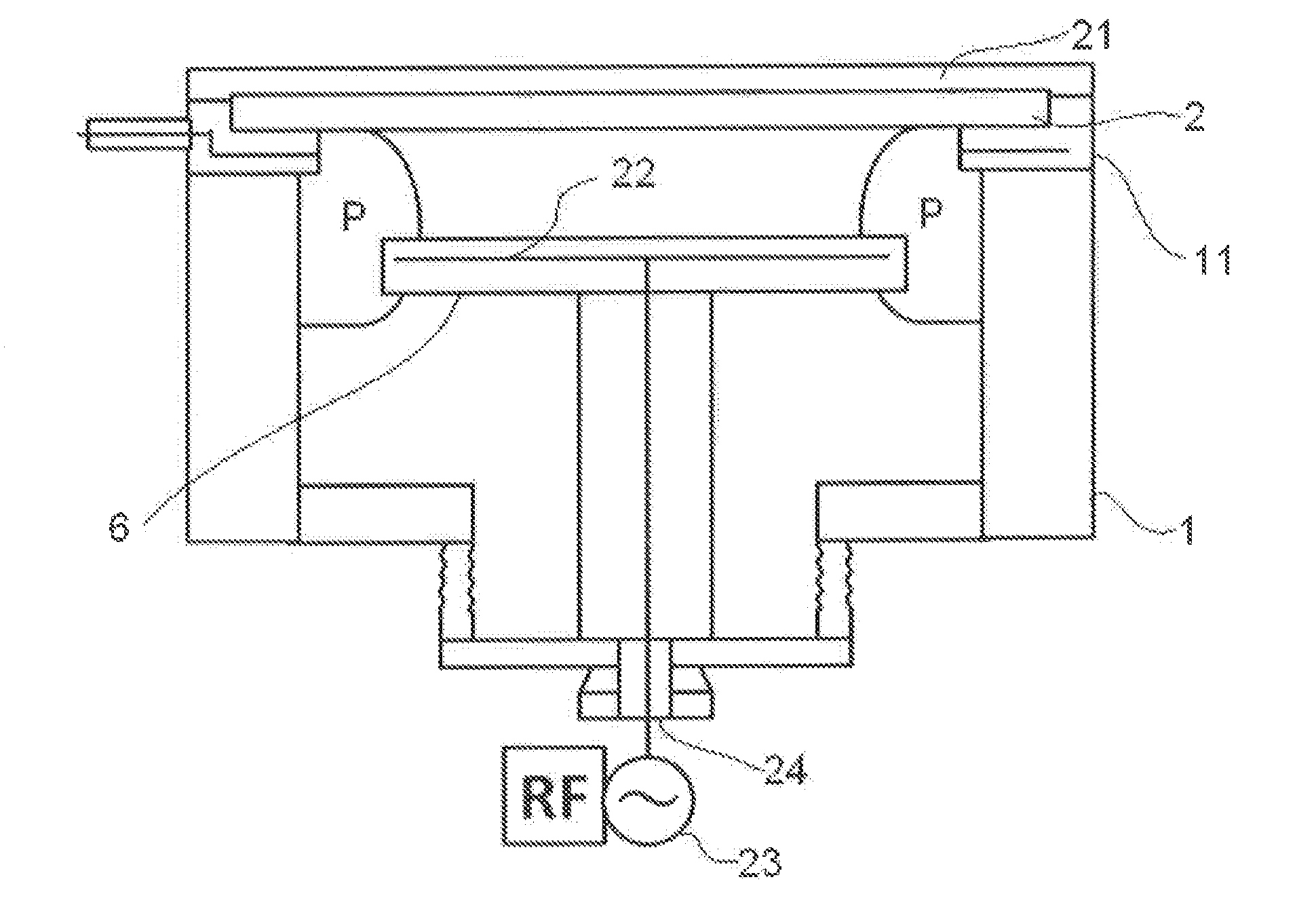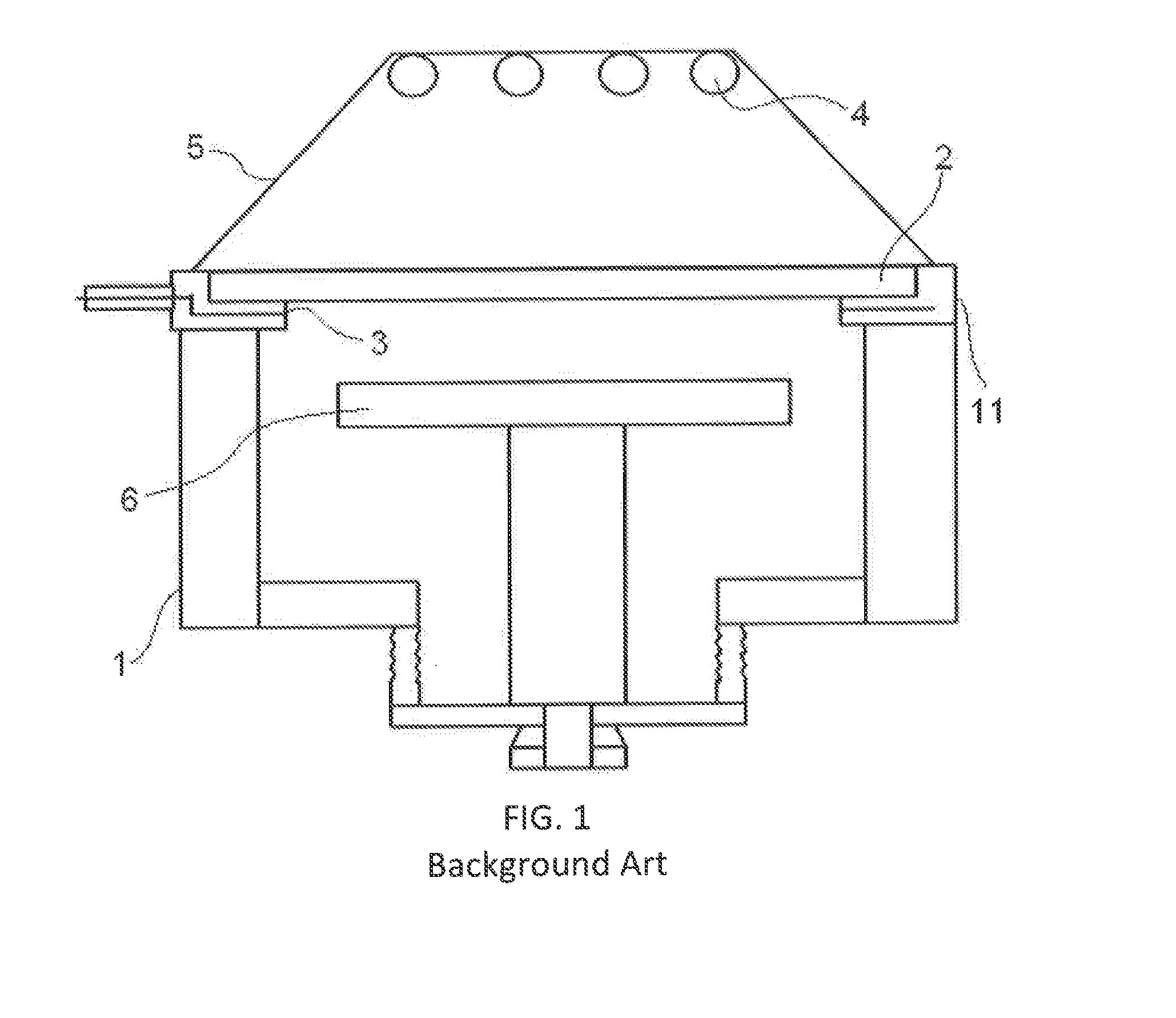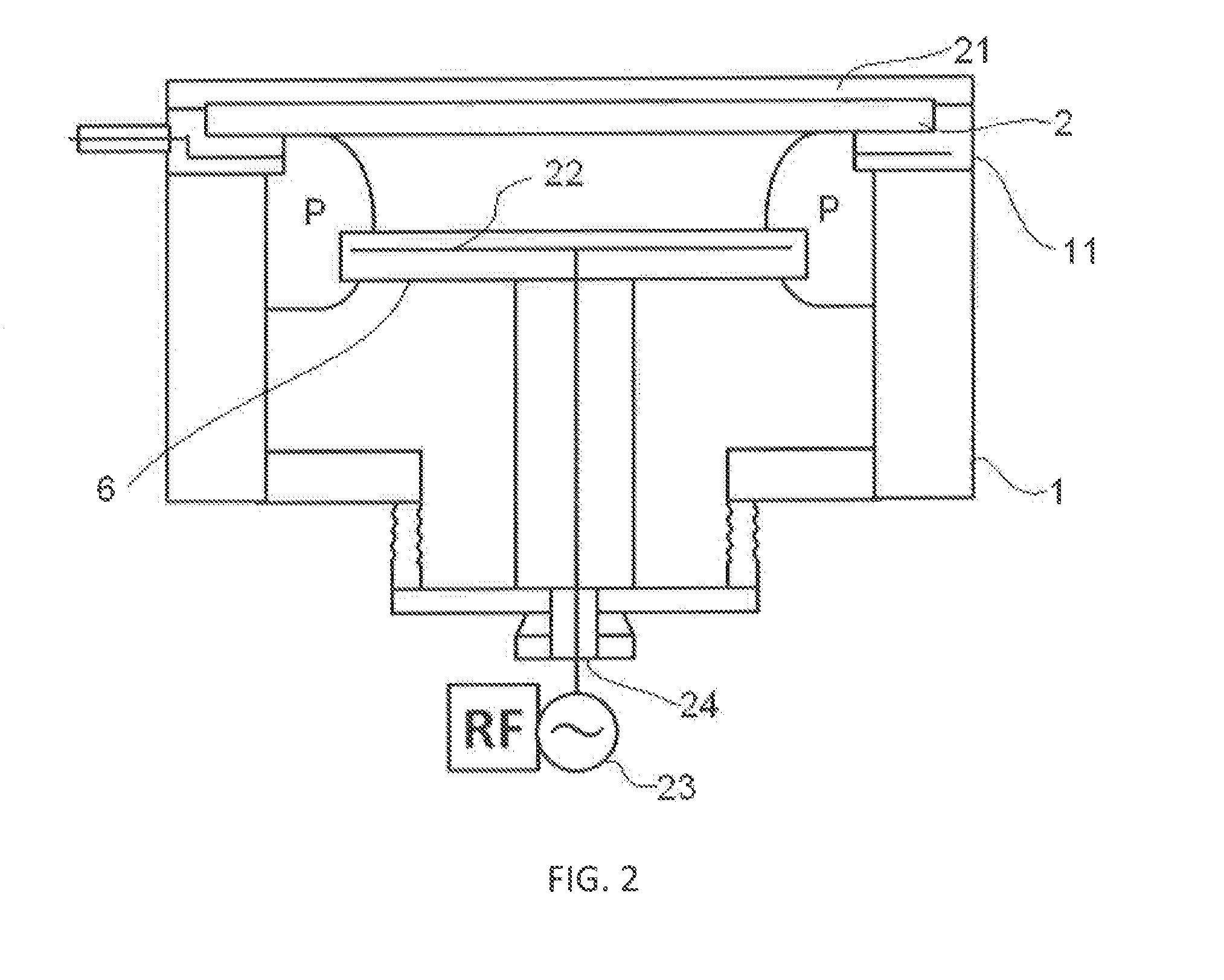UV Irradiation Apparatus with Cleaning Mechanism and Method for Cleaning UV Irradiation Apparatus
a technology of irradiation apparatus and cleaning mechanism, which is applied in the direction of spraying apparatus, chemistry apparatus and processes, coatings, etc., can solve the problems of reducing mechanical strength, elastic modulus, and low dielectric constant, and achieve the effect of efficient implementation of such cleaning methods
- Summary
- Abstract
- Description
- Claims
- Application Information
AI Technical Summary
Benefits of technology
Problems solved by technology
Method used
Image
Examples
example 1
[0075]A substrate (300 mm in diameter) having a dielectric film containing a porogen material formed thereon was loaded in a UV irradiation apparatus illustrated in FIG. 2 provided with a transmission window made of synthetic quartz (SiO2) having a thickness of 20 mm. The dielectric film formed on the substrate was cured in the apparatus under the following conditions:[0076]Pressure: 1-50 Torr[0077]Supplied gas: Nitrogen gas[0078]Temperature: 300-450° C.[0079]Distance between the substrate and the lamps: 5-350 mm[0080]UV wavelength: 150-400 nm[0081]Illuminance (output or intensity) of UV lamps: 5-200 W / cm2 [0082]Irradiation duration: 60 to 600 seconds
[0083]UV transmittance (%) of the transmission window (“a” in FIG. 7) was measured using a spectrophotometer prior to the curing. After 20 substrates were cured, UV transmittance (%) of the transmission window (“b” in FIG. 7) was again measured using a spectrophotometer.
[0084]Next, the reaction chamber was subjected to cleaning. The cle...
example 2
[0092]The same tests as in Example 1 were conducted except that the transmission window made of synthetic quartz was coated by a layer of Al2O3 having a thickness of 300 nm.
[0093]The results are shown in FIG. 8 which is a graph showing the relationships between UV transmittance (%) and wavelength (nm). As shown in FIG. 8, after the UV curing, UV transmittance of the transmission window decreased (“f”) as compared with the initial UV transmittance of the transmission window (“e”) regardless of the wavelength of UV light. When the cleaning gas was O2, UV transmittance was recovered substantially to the initial degree by the cleaning (“f”). Also when the cleaning gas was NF3, UV transmittance was recovered almost to the initial degree by the cleaning (“h”). By visual inspection, no roughness or cloudiness was observed on the surface of the transmission window when the cleaning gas was NF3. Thus, when the surface of the transmission window coated with Al2O3 has resistance against corros...
example 3
[0094]For evaluating cleaning rate, three wafer coupons were attached to a lower surface of a gas ring at positions illustrated in FIG. 9 which is a schematic top cross sectional view of the gas ring, wherein numbers in circles are coupon numbers (the coupon numbers are indicated on the gas ring for illustrative purposes, and the coupons were attached on a lower surface of the gas ring which is not shown in FIG. 9). The gas ring 11 included a circular gas channel 91 provided with a gas inlet port 90 and having gas nozzles 92 extending from the circular gas channel in a radical direction toward the center. Coupon No. 3 was attached near an exhaust, and coupon No. 1 was attached opposite to coupon No. 3. Coupon No. 2 was attached between coupon No. 1 and No. 3. The coupon had a film constituted by Si, O, C, and H, and by cleaning, carbon in the film was removed from the film, thereby reducing the thickness of the film. When the reduction degree of the film thickness was high, the cont...
PUM
| Property | Measurement | Unit |
|---|---|---|
| wavelength | aaaaa | aaaaa |
| wavelength | aaaaa | aaaaa |
| thickness | aaaaa | aaaaa |
Abstract
Description
Claims
Application Information
 Login to View More
Login to View More - R&D
- Intellectual Property
- Life Sciences
- Materials
- Tech Scout
- Unparalleled Data Quality
- Higher Quality Content
- 60% Fewer Hallucinations
Browse by: Latest US Patents, China's latest patents, Technical Efficacy Thesaurus, Application Domain, Technology Topic, Popular Technical Reports.
© 2025 PatSnap. All rights reserved.Legal|Privacy policy|Modern Slavery Act Transparency Statement|Sitemap|About US| Contact US: help@patsnap.com



